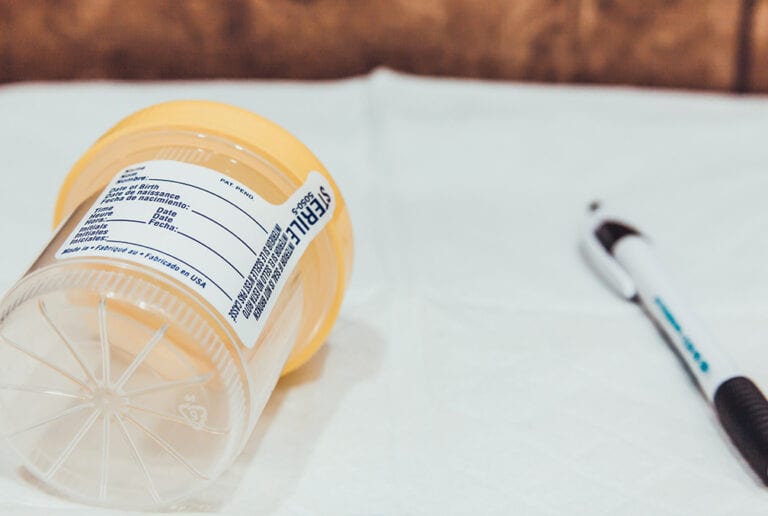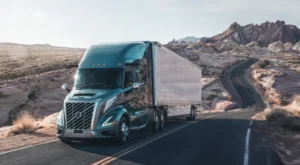Although it’s just beginning its second year of existence, the Federal Motor Carrier Safety Administration’s (FMCSA) Drug and Alcohol Clearinghouse has become a major part of every CDL holder’s record. As of January 2020, carriers are required to run a pre-employment query at the Clearinghouse for each new driver — and another one every year the driver remains employed.
Carriers are also required to report positive DOT tests for drugs or alcohol to the Clearinghouse, as well as return-to-duty (RTD) and follow up testing results.
Although drug and alcohol testing has been part of trucking regulations for three decades now, some drivers still aren’t familiar with the Clearinghouse and their responsibilities as commercial drivers. Let’s look at some of the changes.
For 30 years, employers maintained their own detailed files on drug and alcohol testing for drivers, in addition to the results of those tests and any follow up, such as return-to-work testing performed after a driver tested positive.
However, there was a problem with the way the information was shared between companies.
When a driver applied for a job, regulations required the carrier to ask all former employers (within the past three years) whether the driver in question had ever tested positive or refused to test. Some carriers would make the required queries, while others would not. In addition, some carriers never provided the information when it was requested. The result was that often a driver who tested positive could simply move on to another carrier and start driving, ignoring the FMCSA requirement to complete a return-to-work program administered by a qualified substance abuse professional (SAP).
The Drug and Alcohol Clearinghouse is changing all that. Carriers are required to report all positive tests, refused tests and other categories, such as adulterated specimens, to the Clearinghouse. In addition, carriers must check the driver’s record at the Clearinghouse before putting that person behind the wheel.
Since the Clearinghouse is only a year old and the regulations require the employer to inquire of all previous employers who performed DOT testing for three years, carriers will need to contact DOT employers the driver worked for prior to Jan. 6, 2020, but within the required three-year span.
It’s important to note that carriers you apply to can’t check your record with the Clearinghouse without your permission. In order to grant that permission, you must be registered with the Clearinghouse. You’ll also be able to review and contest information in your Clearinghouse file.
If you haven’t already, you’ll need to create an account at Login.gov. Make sure you remember the login info and password. When you apply for a job, you don’t want a delay while you scramble to find your login information.
Once you have created a login, click the link back to the Clearinghouse. You’ll need your CDL number to sign up, along with other information.
When you apply for a driving job, the employer will have two options for running a query of your Clearinghouse record.
For a “limited” query, one that only confirms whether or not there are any violations in your file but does not provide specifics, you’ll be asked to sign a consent form. This form may include specific dates for which the query can be made, or a total number of queries the employer can make.
For a “full” query, one that provides detailed information about violations in your account. you’ll need to log in to your Clearinghouse account and give your consent electronically.
If your CDL has changed because, for example, you moved to a different state, be sure to update your file at the Clearinghouse. The same goes for any other information that changes, such as your email address. You can see what’s in your Clearinghouse file, free of charge, at any time.
If you’re a self-employed driver, such as an independent owner-operator, you’ll need to register as an employer. You’ll be prompted to identify yourself as an owner-operator during the signup process. However, if you’re leased to a carrier and fall under that carrier’s drug and alcohol testing program, your driver registration should work.
If you are not covered under another carrier’s drug and alcohol testing program, you’ll need to participate in a consortium, sometimes called a third-party administrator (TPA). Because you can’t select yourself for a “random” drug screen, your name is added to others in the TPA’s database, and you become part of a driver pool. The TPA will likely require an initial (pre-employment) drug screen and will notify you if you are selected for random testing.
If you employ other drivers, the TPA will also be your contact for other forms of testing, such as reasonable suspicion, post-accident and return-to-duty testing. Be sure you choose one that is registered with the Clearinghouse, and don’t forget to ask about the network of collection sites used. If you’re selected for a random test, you’ll save time and effort if the collection site is nearby.
Finally, if there’s a positive DOT drug or alcohol test, a refusal to test or other negative information in your Clearinghouse account, there is an FMCSA process you must follow before you can return to driving for ANY employer. Steps in the process include an evaluation by a SAP, completion of prescribed training or treatment, and passing a return-to-duty (RTD) screen. Additional follow-up testing may also be required.
The RTD information is retained in your Clearinghouse file for five years or until you complete all follow-up testing.
You can find more information about the Clearinghouse, including a Frequently Asked Questions (FAQ) section, at clearinghouse.fmcsa.dot.gov.
Cliff Abbott is an experienced commercial vehicle driver and owner-operator who still holds a CDL in his home state of Alabama. In nearly 40 years in trucking, he’s been an instructor and trainer and has managed safety and recruiting operations for several carriers. Having never lost his love of the road, Cliff has written a book and hundreds of songs and has been writing for The Trucker for more than a decade.








